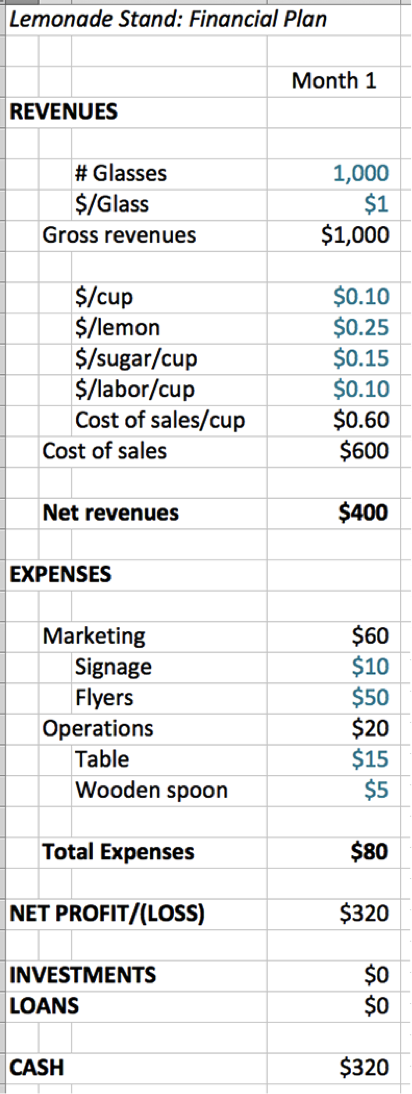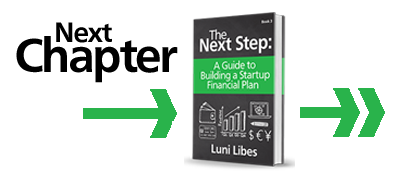With all the categories of revenues and expenses established, it is time to begin filling out the financial plan with numbers.
For most businesses, the best practice is to create a monthly model for the first year of revenues and expenses. Twelve columns of numbers, one per month. For subsequent years, quarterly estimates are usually sufficient. Four columns, one per quarter. The best practice is to include at least three years of financial projections; at most, five.
The exception to these practices is for a business where some other time period is more important. For example, you may sell a product by the week and thus want to include weekly projections. Or your business may be based around school semesters or five events, etc. Use the time periods that make the most sense for your business.
For our lemonade business, monthly expenses works just fine. Below are the estimates for Month 1, of Year 1.
All the blue numbers are assumptions, i.e., estimates. All the black numbers are the result of a formula, adding or subtracting or multiplying the assumptions. With these numbers in place, the descriptions from the last chapter should make more sense.
The plan estimates that 1,000 glasses of lemonade will be sold at $1.00 per glass. This provides net revenues of $400, after paying for all the costs of goods. There are only $80 in fixed expenses, and thus the net income is $320 in profit. With no investments or loans, that means we will have $320 in cash to deposit into the bank at the end of the month.
Amazingly, this lemonade business is profitable. Perhaps that is why so many kids try it out. However, do note that, after a whole month of operations, those profits are only $320 or just over $10 per day, assuming the business operates every day. Profits are certainly good, but the scale of those profits is rather small.
Also note that this financial model doesn’t explain where the $600 came from to buy the cups, lemons, and sugar, nor the $80 for the table, signage, flyers, and spoon. If this were your business and you didn’t have $680 in savings for the startup or a lemon tree, spare table, and donated paper, you might need to break down the Month 1 model into weeks or day, to compute exactly how little money is needed before there really are profits to run the business. That is, maybe you don’t need the full $680 to get started but instead need only $60 upfront, enough to buy the table, some flyers, and sufficient lemonade supplies for the first day, and then you can grow, using profits day by day, throughout the rest of the month.
For now, let’s not worry about the $680 of startup costs and just enjoy looking at the $320 in cash from our profitable lemonade stand.












